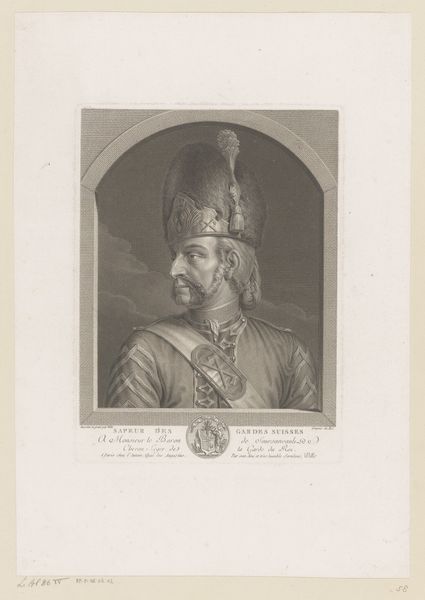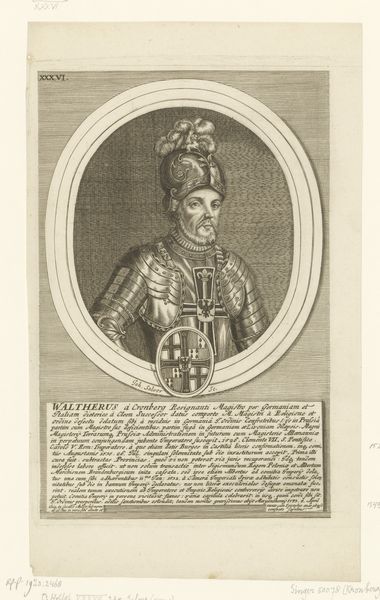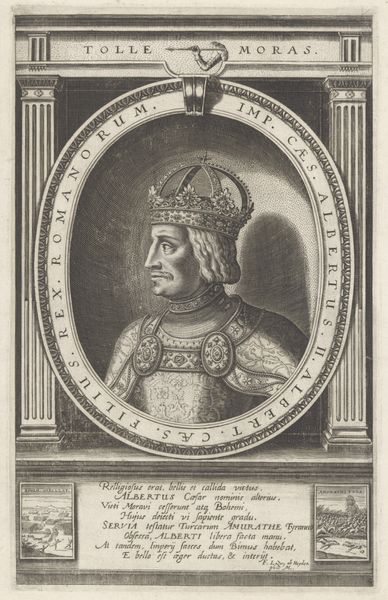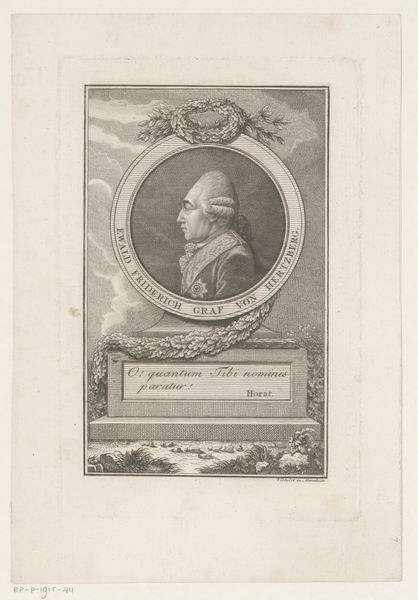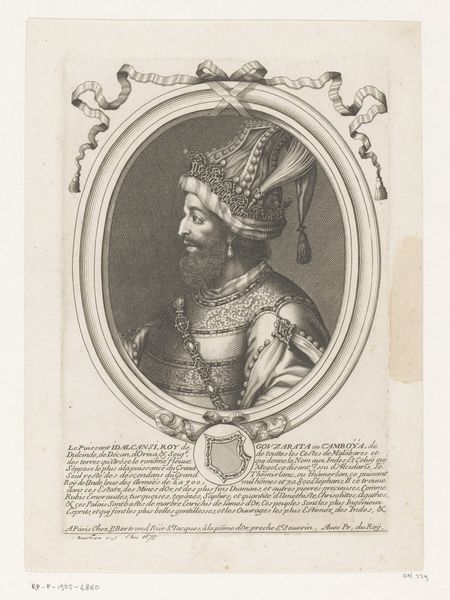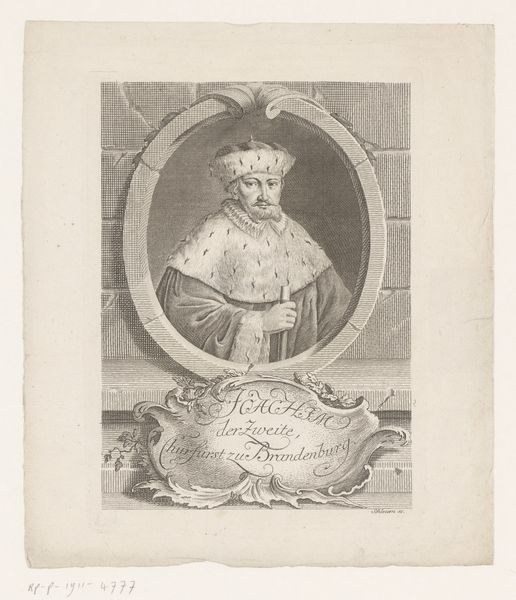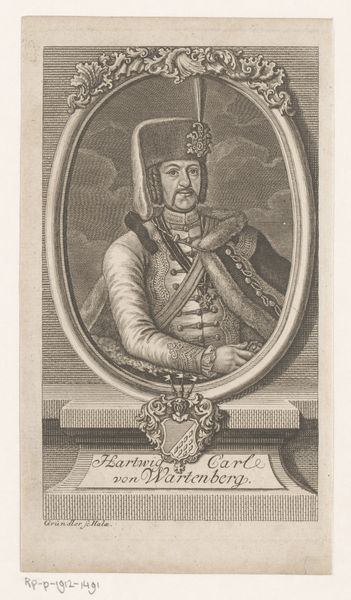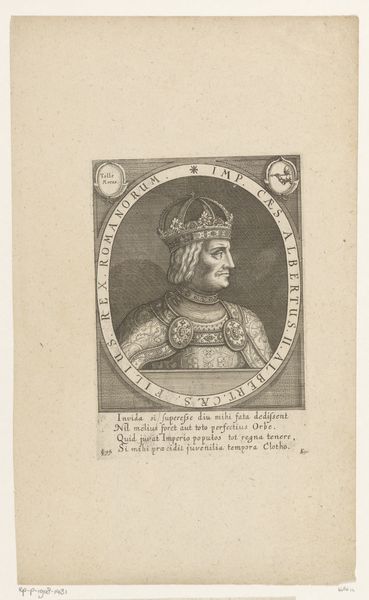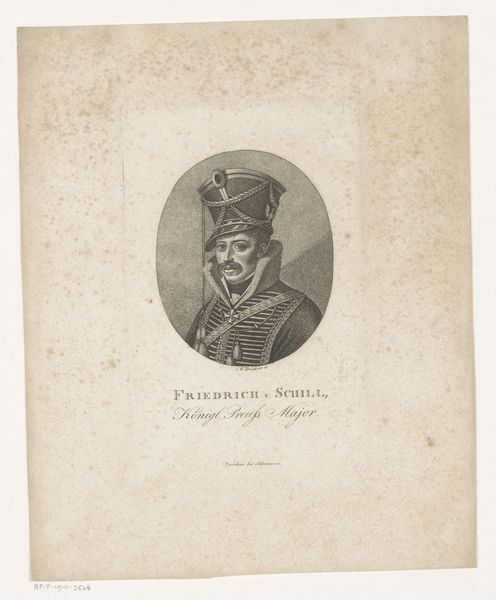
print, engraving
#
portrait
#
baroque
# print
#
old engraving style
#
history-painting
#
engraving
Dimensions: height 150 mm, width 112 mm
Copyright: Rijks Museum: Open Domain
Curator: Immediately, what strikes me is the starkness of the engraving; the stark black and white. It's so formal, classical almost. Editor: Well, let's set the stage. This is a print, titled "Portret van Hendrik III", by Jean Pelletier. It dates to between 1755 and 1765. A fascinating time for printmaking, situated firmly in the age of expanding printing capabilities, democratizing image production beyond the elite. Curator: I find the composition quite arresting. The subject is encased in an oval which rests on what looks like an embellished pedestal, it calls for rigid framing! It accentuates the imposing air the artist is clearly after, don't you think? Editor: Certainly, there’s an element of grandeur intended in that oval and pedestal, but the very material betrays its historical context. Engravings were often used for reproductions and illustrations in books and pamphlets. It speaks volumes about the culture's means of distributing and engaging with images of power and the history of art through print. Curator: True, the image of power is indeed a cultural construct of production means and class awareness... still the fineness of lines! They have an evocative effect, the meticulous craft is what makes me engage so immediately with the king, particularly the details in his crown and the patterned folds of his robe. Editor: Consider the economic aspect! Printmaking demanded skilled labor, and it represents an intersection of art, commerce, and social dissemination. This portrait becomes accessible and multiplies its socio-cultural weight and even its power in ways exclusive painting wouldn’t be. Curator: I hadn't considered how accessible this image of nobility becomes because of printmaking techniques. Editor: Exactly. And accessibility affects interpretation. How might contemporary viewers perceive it in different social classes of viewers, given this proliferation? It makes me reconsider it. Curator: Ultimately, Pelletier’s skill lies in evoking presence and a powerful one indeed. I came to admire the baroque texture achieved in such minimal medium as well, and it's something only visual and theoretical inspection can reach. Editor: And ultimately, situating an engraving in its context allows one to investigate the circulation and consumption of the medium itself as an item with history and labor.
Comments
No comments
Be the first to comment and join the conversation on the ultimate creative platform.
